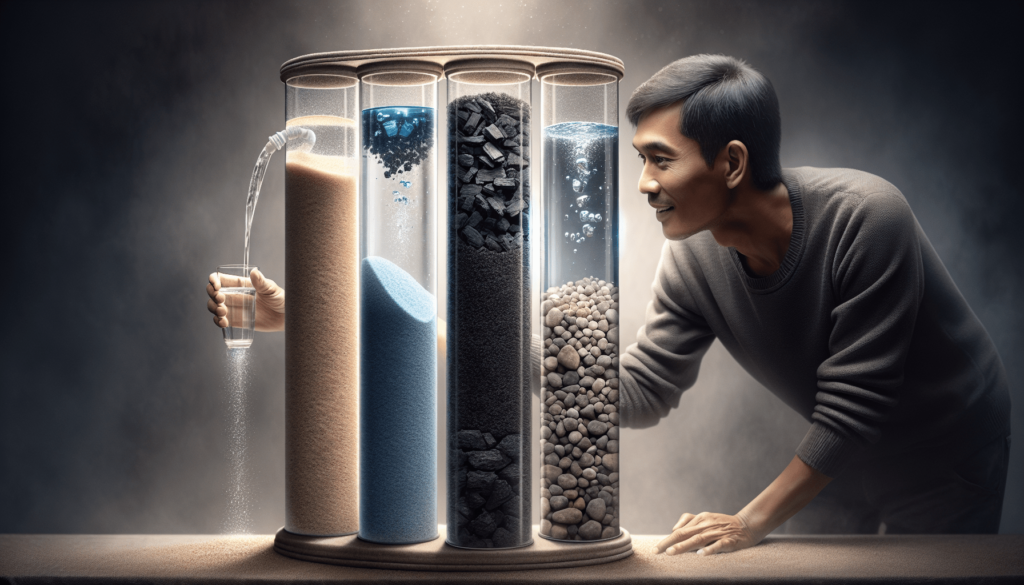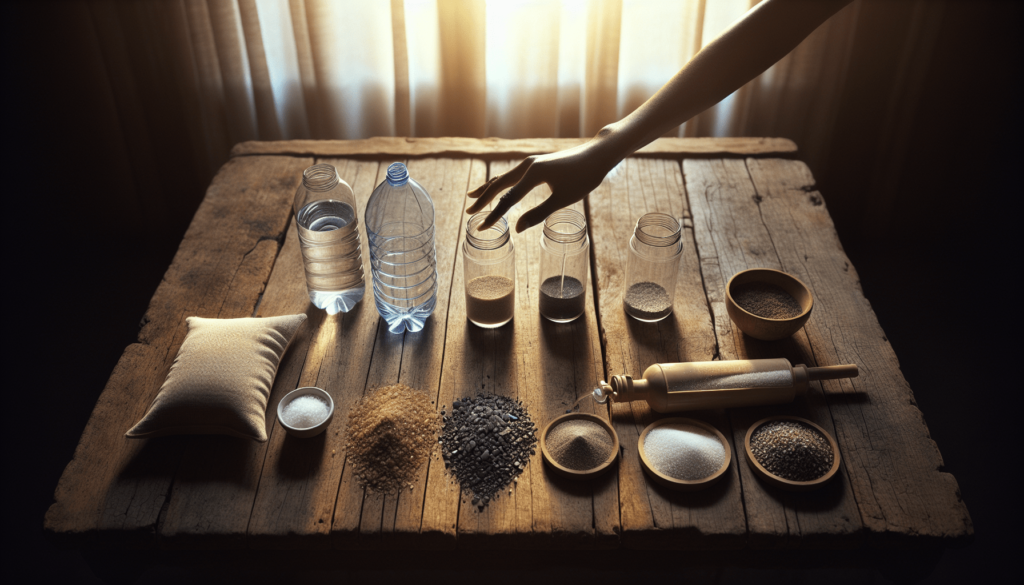Imagine a life where you and your family are self-sufficient, living off the grid. Your backyard is transformed into a flourishing survival garden, providing fresh produce for your table. You’ve honed your skills in identifying wild plants for sustenance and have even mastered the art of avoiding poisonous imposters. Disaster preparedness has become second nature, ensuring you can care for your pets during emergencies. But the true gem of your self-reliance journey is the DIY projects you’ve accomplished, from building a homemade water filter to a solar power system. And it doesn’t stop there – even the younger adventurers in your family are learning essential survival skills, like crafting shelters and starting fires without matches. From wilderness navigation to medical know-how, your journey into off-grid living is about more than just doomsday survival; it’s about finding freedom, connecting with nature, and empowering yourselves with invaluable skills. So, are you ready to embark on this off-grid adventure and start crafting your own clean drinking water in 5 easy steps?

DIY Water Filter
Introduction
Are you looking for a cost-effective and convenient way to have clean drinking water at your fingertips? Look no further than a DIY water filter! With just a few materials and some simple steps, you can create your very own water filter that removes impurities and ensures the water you drink is safe.
Benefits of DIY Water Filters
There are several benefits to creating your own water filter. First and foremost, it provides you with a sustainable and reliable source of clean drinking water. Whether you are camping, hiking, or simply want to filter tap water at home, a DIY water filter can do the job effectively. Additionally, DIY water filters are customizable to fit your specific needs and can be made using easily accessible materials.
Materials Needed
Before you begin building your DIY water filter, it’s essential to gather all the necessary materials. Here is a list of items you will need:
- Filtering medium (such as charcoal, sand, gravel)
- Container (can be a plastic bottle or a bucket)
- Knife or scissors
- Tape or glue
- Collection container (a clean drinking glass or bottle)
Now that you know what materials you need, let’s move on to the first step.
Step 1: Gather Your Materials
The first step in creating your DIY water filter is to gather all the materials on the list. Make sure you have everything readily available before you begin the construction process.
List of Materials:
- Filtering medium (charcoal, sand, gravel)
- Container (plastic bottle or bucket)
- Knife or scissors
- Tape or glue
- Collection container (clean drinking glass or bottle)
Where to Find Materials:
Most of the materials needed for a DIY water filter can be found in your home or easily purchased at a local hardware or grocery store. Charcoal can be obtained from the remnants of a BBQ or purchased at a pet store. Sand and gravel are often found in gardening stores or can be collected from outdoor sources. Plastic bottles or buckets can be repurposed from containers you already have. Remember, recycling and reusing materials helps to reduce waste and is environmentally friendly.
Step 2: Prepare the Filtering Medium
The filtering medium is an essential component of your water filter as it removes impurities and contaminants from the water. Choosing the right filtering medium is crucial for effective filtration.
Choosing the Right Filtering Medium:
Charcoal, sand, and gravel can all be used as filtering mediums depending on the level of filtration required. Charcoal is highly effective in removing odors and tastes from water. Sand and gravel are excellent for removing larger particles and sediment. Consider the water source and the specific impurities you want to remove when selecting the right filtering medium for your DIY water filter.
Preparing the Filtering Medium:
Before using the filtering medium, it’s important to clean it thoroughly to remove any dust or debris. Rinse the charcoal, sand, or gravel with clean water until the water runs clear. This will ensure that the filtering medium is ready to effectively filter the water.
Step 3: Build the Filter Container
The filter container holds the filtering medium and directs the flow of water through the filter. Follow these steps to build your own filter container.
Selecting a Suitable Container:
Depending on the size and portability you desire, you can choose between a plastic bottle or a bucket as your filter container. For a smaller, more portable filter, a plastic bottle is ideal. If you require a larger capacity or plan to filter larger quantities of water, a bucket may be more suitable.
Creating Inlet and Outlet Openings:
To allow water to enter and exit the filter, you need to create inlet and outlet openings. Use a knife or scissors to carefully cut a hole near the bottom of the container to serve as the water inlet. This hole should be large enough for water to flow freely but not too large to allow the filtering medium to escape. Similarly, cut a hole near the top of the container to serve as the water outlet.
Assembling the Filter Container:
Once you have created the inlet and outlet openings, securely attach the filtering medium to the container. If you are using a plastic bottle, you can tape or glue the filtering medium to the neck of the bottle. If using a bucket, place a mesh or fabric at the bottom of the container to prevent the filtering medium from falling out.

Step 4: Assemble the Water Filter
Now that you have prepared the filter container, it’s time to assemble the water filter itself.
Layering the Filtering Mediums:
If you have chosen to use multiple filtering mediums, such as charcoal, sand, and gravel, layer them in the filter container starting with the largest particles at the bottom (gravel) and ending with the smallest particles at the top (sand or charcoal). This layering ensures that water flows through each medium, effectively removing impurities at different levels.
Adding a Filter Base:
To prevent the filtering medium from falling out, add a filter base at the bottom of the container. This can be a small piece of fabric or mesh that allows water to pass through but keeps the filtering medium in place.
Securing the Filtering Mediums:
Once you have added the filtering mediums and the filter base, secure them in place by sealing the container. If using a plastic bottle, you can screw the bottle cap back on or seal it with tape. For a bucket, cover the top with a mesh or fabric and secure it tightly.
Adding a Collection Container:
To collect the filtered water, place a clean drinking glass or bottle underneath the water outlet. This container will hold the clean, filtered water ready for drinking.
Step 5: Test and Use Your DIY Water Filter
Now that your DIY water filter is complete, it’s time to test it and start enjoying clean water.
Testing the Filtered Water:
Fill the filter container with water and observe how it filters through the filtering medium. The water should flow through the filter and into the collection container, leaving behind any impurities or contaminants. Taste and smell the filtered water to ensure it meets your standards of cleanliness.
Maintenance and Cleaning Tips:
Regular maintenance and cleaning of your DIY water filter are important to ensure its continued effectiveness. Replace the filtering medium periodically and clean the container and filter base to remove any buildup or debris. This will help maintain the quality of the filtered water and extend the lifespan of the filter.
A Comparison: DIY Water Filter vs. Commercial Water Filter
While DIY water filters offer a cost-effective solution for clean drinking water, it’s essential to compare their effectiveness to commercial water filters.
Cost:
DIY water filters are considerably cheaper to build compared to commercial water filters, which often require expensive cartridges or replacement parts. By using easily accessible materials, you can save money while still achieving clean and filtered water.
Effectiveness:
Both DIY water filters and commercial water filters are effective in removing impurities and contaminants. However, commercial water filters often undergo rigorous testing and certification processes to ensure their effectiveness. If you require high-quality filtration and have specific concerns about water safety, a commercial water filter may be a better choice.
Customizability:
One significant advantage of DIY water filters is their customizability. You have control over the filtering mediums, container size, and overall design of the filter. This allows you to tailor the filter to your specific needs and preferences.
Other Uses for DIY Water Filters
While DIY water filters are primarily designed for providing clean drinking water, they can also serve other purposes.
Filtering Outdoor Water Sources:
If you enjoy camping or hiking, having a portable DIY water filter can be a game-changer. It allows you to filter water from natural sources such as rivers, lakes, or streams, ensuring that the water is safe for consumption.
Emergency Preparedness:
DIY water filters are an essential tool to have in emergency preparedness kits. During natural disasters or emergencies, the availability of clean drinking water can become scarce. A DIY water filter can provide a reliable source of clean water when access to public water supplies is limited or contaminated.
Conclusion
Creating your own DIY water filter is a rewarding and practical endeavor that ensures clean drinking water wherever you may need it. By following the easy steps outlined in this article, you can craft a water filter that meets your specific needs and preferences. From filtering outdoor water sources during camping trips to being prepared for emergencies, a DIY water filter is a valuable addition to your self-reliance toolkit. So, gather your materials, get creative, and start enjoying the benefits of clean drinking water with your very own DIY water filter.
Summary
A DIY water filter provides a cost-effective and customizable solution for obtaining clean drinking water. By gathering the necessary materials and following a few simple steps, you can build your own water filter. The filtering medium, container, and assembly process are crucial components in creating an effective filter. Testing the filtered water and practicing regular maintenance are important for ensuring the filter’s continued effectiveness. While DIY water filters are comparable to commercial filters in terms of cost and effectiveness, they offer the advantage of customizability. DIY water filters also have other uses, such as filtering outdoor water sources and emergency preparedness. By embracing self-reliance and learning valuable skills, you are equipped to navigate unexpected situations and thrive in any circumstances.
Importance of DIY Water Filters
DIY water filters play a vital role in providing clean drinking water in various situations. Whether you are exploring the great outdoors, preparing for emergencies, or simply looking for a cost-effective solution, a DIY water filter offers a convenient and reliable way to ensure the water you consume is safe. By taking control of your water filtration needs and crafting your own filter, you are empowering yourself with essential survival skills and enhancing your self-sufficiency.
Additional Resources
For more detailed instructions and ideas on DIY water filters, consider exploring the following resources:
-
Websites with DIY Water Filter Instructions:
-
Books on Off-Grid Living and Survival Skills:
- “The Prepper’s Water Survival Guide” by Daisy Luther
- “Self-Sufficient Drinking Water” by Duncan J. Bell
Remember to always prioritize safety and hygiene when using and maintaining your DIY water filter. Happy filtering!

